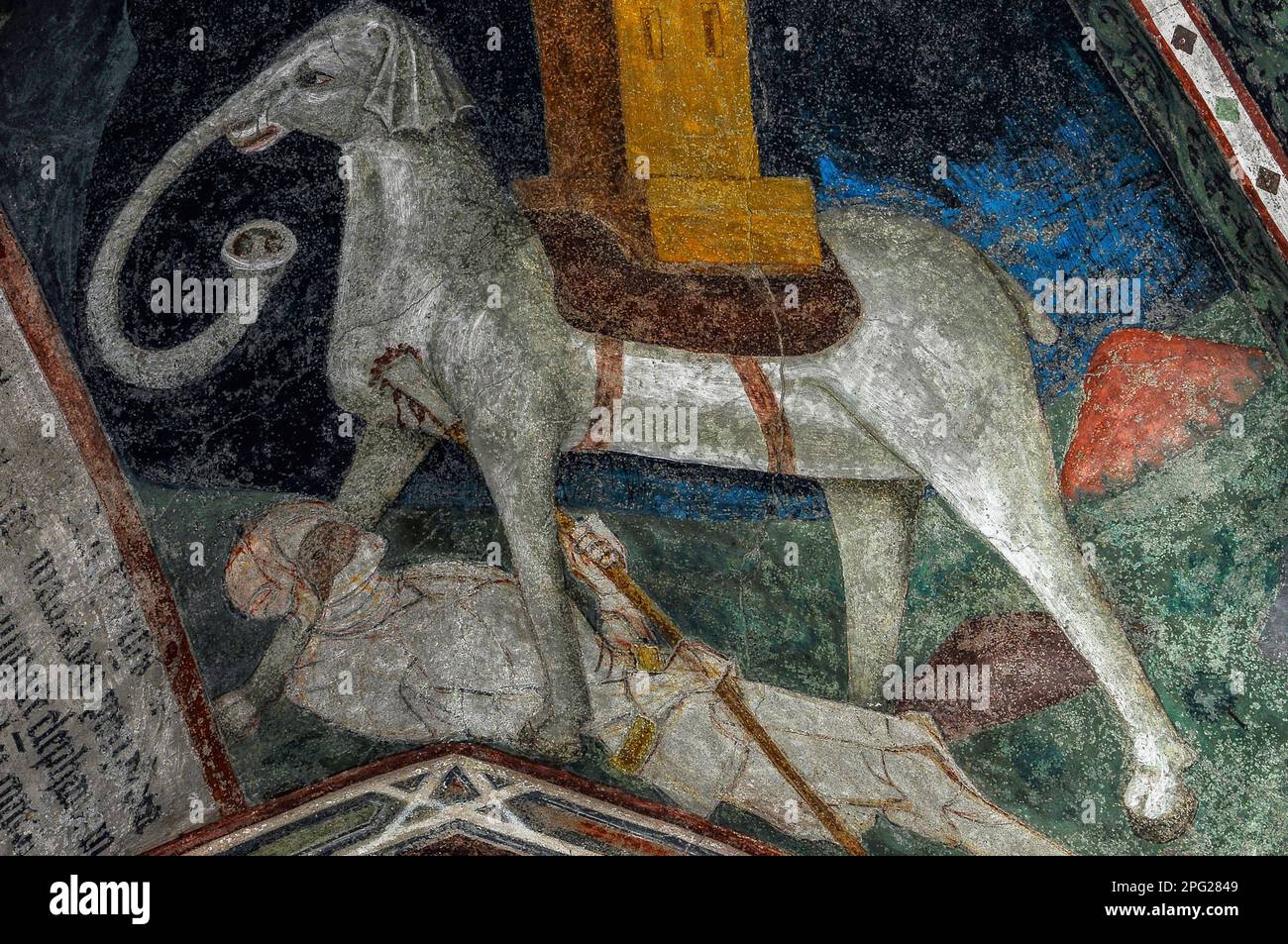Armoured Hebrew hero Eleazar Maccabee about to die after impaling a war elephant at the Battle of Beth Zechariah in 162 BC. Detail of Late Gothic fresco in ceiling vault of medieval cloister next to the Cathedral of Santa Maria Assunta at Bressanone-Brixen, South Tyrol, Trentino-Alto Adige, Italy. The elephant has a small head, tapering legs, fluted ears and a trunk with a bell-shaped end.

Image details
Contributor:
Terence Kerr / Alamy Stock PhotoImage ID:
2PG2849File size:
32.1 MB (3.1 MB Compressed download)Releases:
Model - no | Property - noDo I need a release?Dimensions:
4110 x 2730 px | 34.8 x 23.1 cm | 13.7 x 9.1 inches | 300dpiDate taken:
8 June 2008Location:
Cathedral cloister, Bressanone-Brixen, South Tyrol, Trentino-Alto Adige, ItalyMore information:
This image could have imperfections as it’s either historical or reportage.
Bressanone-Brixen, South Tyrol, Trentino-Alto Adige, Italy: amongst Late Gothic frescoes decorating the walls and ribbed ceiling vaults of a medieval cloister attached to the Cathedral of Santa Maria Assunta. The frescoes, painted in the 1300s and 1400s, depict biblical and other Christian scenes and medieval life. The fresco in this image depicts Hebrew hero Eleazar Maccabee at the Battle of Beth Zechariah in 162 BC, lying under a war elephant. Eleazar Maccabee thrusts a sharp weapon into the unprotected belly of the elephant - seconds before he dies when the elephant collapses on top of him. The Battle of Beth Zechariah was fought between 20, 000 Jewish rebels and a Seleucid army of 55, 000 Greeks and Syrians equipped with chariots and 30 war elephants. Eleazar, younger brother of rebel leader Judah Maccabee, believed one elephant carried the Seleucid king and planned to kill it to strengthen Jewish resolve - but the battle ended in a heavy Jewish defeat and a new siege of Jerusalem. Despite that, Eleazar was hailed as a hero, gaining the posthumous nickname ‘Avaran’ (Piercer). The original cloister was rebuilt in Romanesque style in the late 1100s and then again in Gothic style in the 1300s. A church is known to have been on the Bressanone Cathedral site since the 980s. The original building was rebuilt in Romanesque style in the late 1100s. Then, in the 1700s it was rebuilt again, in Baroque style, and this is the cathedral building that survives today. The spa city of Bressanone-Brixen was founded in 901 AD, becoming the seat of powerful Prince Bishops whose influence forged links between southern Germany and northern Italy. South Tyrol became part of Italy after the 1914-18 First World War. D0723.A8647